The Right Way to Crowdfund
Answers to Your Questions About How to Raise More Money and Awareness
By Dana Ostomel
With the rise of crowdfunding in the nonprofit world over the past several years, it’s important to understand exactly what it is and where it could fit within your organization’s overall fundraising strategy.
It’s not a “build it and they will come” phenomenon—wouldn’t that be nice? Neither is it a magic elixir that’ll solve all your fundraising woes. But done right, crowdfunding could significantly boost your online fundraising efforts, especially for specific initiatives.
Crowdfunding, or online social fundraising, is personable and easy for both people who want to donate and share your campaign. Crowdfunding platforms are also easy to set up—you typically use a template and simply pop in your text and imagery to tell your story, and you’re ready to go. This doesn’t mean crowdfunding campaigns don’t require advanced planning and strategy (they do), but the setup of your campaign is fairly simple, with low costs. This makes it an effective fundraising tool for most organizations looking to expand their fundraising capabilities and capacity.
Let’s take a quick look at the basics of crowdfunding and answers to some of the most commonly asked questions I hear.
What is crowdfunding?
Crowdfunding is exactly as it sounds: It’s the process of raising small amounts of money from a large number of people—a crowd—for a specific purpose or project, particularly online. It’s quickly becoming an essential tool for online fundraising. The innovative part of crowdfunding is not necessarily in accepting donations online; it’s in doing it in such a way that allows you to leverage your community, not just for the purpose of giving but for sharing. It’s about leveraging and accessing social capital.
Is crowdfunding only about raising money?
That’s its main purpose—but that doesn’t mean there aren’t other advantages to running a crowdfunding campaign. Some organizations use it to grow their new donor list or their email subscribers. Some might try to target lapsed donors and re-engage them. Because of the shareable nature of crowdfunding campaigns, your organization’s reach and awareness are apt to grow, and you may be able to foster more social media engagement with your followers. Also, look at it this way: We know that most donors check out an organization’s website before they donate—they do a little homework before they part with their cash. Running a crowdfunding campaign could be just the impetus you need to get your website up to snuff and make sure it has the bells and whistles (and tools and features) you need to put your best face forward. Ultimately, you crowdfund to raise money, but there are several significant bonuses that come along with it.
What part does crowdfunding play in my overall fundraising strategy?
It’s a tool that’s best used for funding specific projects or campaigns, not for general fundraising. Giving Tuesday is a great example of a time when a nonprofit could benefit from crowdfunding: It has an obvious beginning and end, it lends itself to a campaign that’s easily shareable and consumers are becoming familiar with that initiative as it rolls around each year.
Think of crowdfunding as a great tool for a mission-specific project, campaign or venture that shows a tangible, urgent need and would appeal to a wide audience. It gives you an opportunity to showcase a specific need and the difference someone’s donation could make—there’s a story to it. It engages people to be part of a unique journey. And we all know that when people feel like they are a part of the story and they understand exactly what’s going on and how they can help, they are more invested.
Are there disadvantages to crowdfunding?
Crowdfunding campaigns can provide a nice boost to your revenue, but they won’t be a cure-all, which is something to keep in mind when you launch a campaign. Some people think they can launch a crowdfunding campaign, go away for a month, then come back to find that they’ve met their goal. But it doesn’t work that way.
In fact, one of the things that hinders success for many organizations is believing the myth that because a crowdfunding campaign is online and it’s built to be social and shareable, it’ll just drive itself. That’s not the case. Crowdfunding campaigns are not a “set it and forget it” mechanism. There are not benevolent donors just trolling the internet, wanting to give away their money—at least, not many. In order for a crowdfunding campaign to be effective, you have to first get some traction from your own supporters, and then you may get some unexpected help from others outside your base as your campaign gains strength and awareness. But like any form of fundraising, it requires work and preparation.
What’s key to a successful crowdfunding campaign?
One of the most difficult parts of crowdfunding is getting off zero. Donors tend to follow the masses, and many donors may feel uncomfortable supporting a campaign with a lofty goal if it looks like next to nothing has been raised. Remember the ALS water bucket challenge? That gained so much traction that people were lining up (figuratively) to get involved. People just naturally tend to go where the crowd is.
One thing you can do to avoid the “getting off zero” challenge is to not start at zero. Get some traction and prepare before you actually launch your campaign. Reach out to your online street team—your closest friends and family, biggest advocates, longtime supporters and board members that you know will both support and share your fundraiser with their social networks. It’s important to get some momentum even before Day One.
Another important key to success: Set up your crowdfunding page the right way. It should be personable with a sense of urgency. Include engaging images of people, maybe a captivating video that tells your story. These things will tug at heartstrings, which is exactly what you need. Also, cut right to the heart of the campaign in your messaging: Why do you need money? This isn’t the place to launch a full-blown denoscription of your nonprofit’s mission. This page is all about the campaign’s mission. Just include a few specific sentences about why you’re raising money and what it will be used for—that’s all people want or need to know. You have about three to five seconds to get their attention, so it’s important to keep your messaging focused and engaging.
This gives you some basics about how to begin crowdfunding—but what you really need are the right online tools to pull off a successful campaign, including an affordable user-friendly website with a content management system you can use with point-and-click simplicity. The great news is, Firespring can hook you up with all that at a significant savings thanks to your membership in the Montana Nonprofit Association.
Learn about Firespring’s partnership with the MNA and how you can save big bucks on the technology and software you need to boost your fundraising.
About the Author:
Dana Ostomel is vice president of nonprofit industry development at Firespring, a company that provides essential software and beautiful websites to nonprofits. Prior to her role at Firespring, Dana was the founder and CEO of Deposit a Gift, a crowdfunding platform that allows nonprofits to easily create online fundraising campaigns for any organizational need. Firespring joined forces with Deposit a Gift in August 2016 with Dana residing as the company’s lead crowdfunding expert. Before launching her own business, Dana spent over a decade as a marketing and branding adviser, developing integrated marketing solutions for nationally known brands such as Snapple, CENTURY 21, MasterCard and DIRECTV. Dana holds a Bachelor’s degree in Communications from UCLA.

 The Right Way to Crowdfund
The Right Way to Crowdfund 